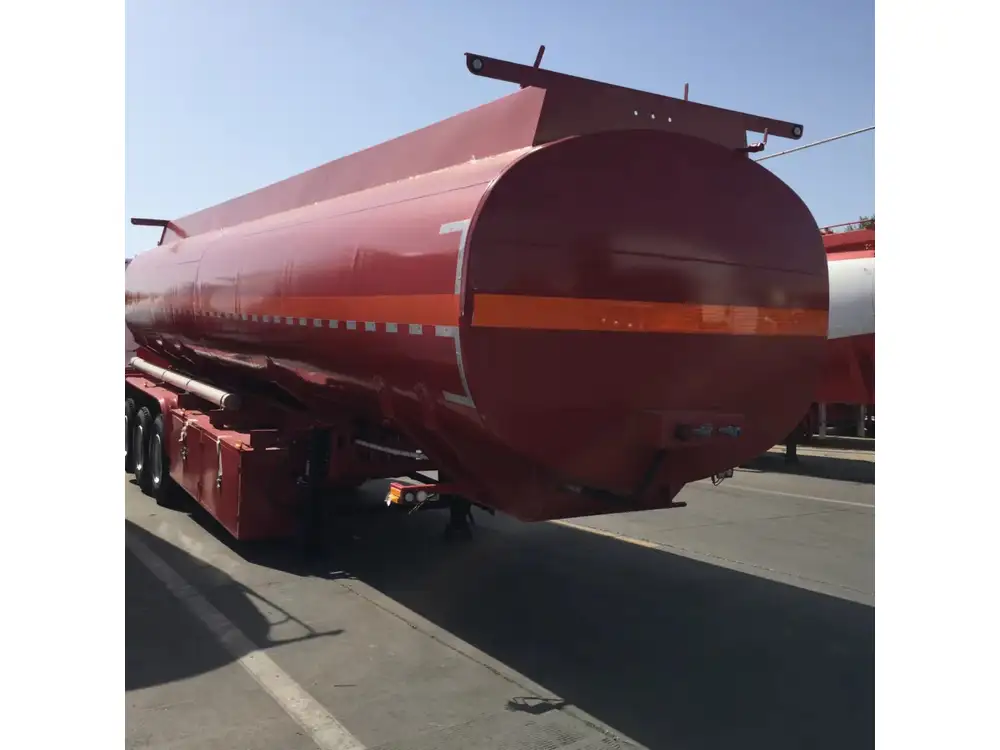When it comes to enjoying outdoor adventures, the Puma travel trailer stands out not just for its comfort and amenities, but also for its functionality — especially regarding propane usage. The intricacies of propane tanks can seem overwhelming for those new to RVing or potential buyers. Therefore, we will dissect the essential elements surrounding propane tanks with Puma travel trailers, offering guidance that is both informative and practical.
Key Features of Puma Travel Trailers
Puma travel trailers are designed with quality in mind. But what exactly is included when it comes to propane tanks? Understanding the specifications and features that accompany these trailers will help users make informed decisions.
Tank Specifications
When you purchase a Puma travel trailer, it commonly includes:
- Dual Propane Tanks: Most Puma models feature two propane tanks, which are strategically mounted on the trailer’s front for easy access.
- Capacity: Each tank usually has a nominal capacity of 20 pounds, translating to approximately 4.6 gallons of propane.
- Material: Tanks are typically constructed from high-quality steel with a protective coating to prevent rust and deterioration, ensuring prolonged use.

System Integration
- Regulators: The propane system in Puma trailers is equipped with high-efficiency regulators that ensure an even fuel distribution to appliances such as furnaces, stoves, and water heaters.
- Automatic Changeover: Many Puma models come with an automatic changeover valve that seamlessly switches from an empty tank to a full one, maintaining an uninterrupted supply of gas.
Why Propane Matters for Your Trailer Experience
Using propane in a travel trailer extends beyond merely fueling appliances. It encompasses safety, efficiency, and overall enjoyment while camping.
Safety Considerations
When dealing with propane, it’s pivotal to ensure safety:
- Detection: Incorporation of a propane gas detector within your trailer is imperative. Regular inspections must be conducted to ensure it’s operational.
- Ventilation: Properly ventilating living spaces when propane appliances are in use to prevent accumulation of gas.

Efficiency and Cost
The most pragmatic aspect of utilizing propane in a Puma travel trailer is the efficiency:
- Cost-Effective: Propane is affordable, often cheaper compared to electricity, making it the preferred choice for many RVers.
- Convenience: The ability to cook, heat, and operate appliances while on the road enhances the overall travel experience without reliance on campground power.
Installation and Maintenance of Propane Tanks
If you’re considering a Puma travel trailer, knowing how to manage the propane tanks is crucial for enhancing your camping experience.
Installation Guide
- Placement: Properly position the propane tanks within the designated compartments of the trailer.
- Secure Connections: Ensure that all connections between the tanks and the piping are tightly sealed and free from debris.
- Check for Leaks: Utilize a soap and water solution to spray on connections, looking for bubbles that indicate leaks; if found, retighten or replace connections as needed.

Regular Maintenance
Handling propane tanks requires continuous attention:
- Inspect Regularly: Check the condition of the tanks for rust, dents, or any signs of damage.
- Refilling: Monitor remaining propane levels and refill tanks at reputable fueling stations or propane suppliers.
- Storage: When not in use, store propane tanks in an upright position, placed in a cool, well-ventilated area away from sunlight.
Frequently Asked Questions About Propane Tanks in Puma Travel Trailers
How Long Does Propane Last in a Travel Trailer?
- Duration: The duration propane lasts depends significantly on usage patterns. On average, a well-utilized 20-pound tank might last from 10 days to several weeks, especially when appliances like stoves and furnaces are in frequent operation.

What Appliances Utilize Propane in Puma Travel Trailers?
- Common Appliances: Generally, the following appliances consume propane:
- Cooktops
- Ovens
- Furnaces
- Water heaters
Can I Upgrade My Propane Tank?
- Upgrading Options: Yes, upgrading to larger capacity tanks or modernizing your system with advanced regulators could enhance efficiency. Consult the Puma manufacturer or a specialized technician for appropriate adaptations.
Buying a Puma Travel Trailer: Things to Consider
Purchasing a Puma travel trailer encompasses numerous considerations, which necessitate assessing more than just the price.

Research and Compare Models
A thorough analysis will reveal different configurations, sizes, and features across Puma models.
| Model Name | Length | Weight (dry) | Number of Beds | Price Range |
|---|---|---|---|---|
| Puma 25-RBSC | 28 ft | 5,400 lbs | 2 | $20,000 – $30,000 |
| Puma 30-DBTS | 32 ft | 6,000 lbs | 3 | $25,000 – $35,000 |
| Puma 31-DBT | 34 ft | 6,800 lbs | 4 | $30,000 – $40,000 |
Inspect the Propane System
Before finalizing the purchase, ensure to inspect the propane system meticulously:
- Look for Damage: Examine the exterior and interior propane components for rust, dents, or any wear and tear.
- Test Appliances: Ask the dealer to test the propane appliances to guarantee their functionality.
Conclusion: Ensuring an Optimal Experience with Your Puma Travel Trailer
Understanding what propane tank comes with a Puma travel trailer is not merely a superficial inquiry but rather an essential concern for enhancing your camping experience. With robust safety protocols, thorough maintenance practices, and an awareness of the heating and cooking capabilities propane provides, RV enthusiasts can enjoy their journeys without worry. Equipped with the right knowledge about propane systems, future owners can dive into the world of adventure that a Puma travel trailer promises.
Employing the right fuel is critical, not only for functionality but also for maximizing the enjoyment of outdoor escapades. So, as you embark on your journey with Puma, ensure that you maintain your propane systems properly and consider these insights for a safe and pleasurable experience. Embrace the road ahead, equipped with both knowledge and a full propane tank. Happy camping!



